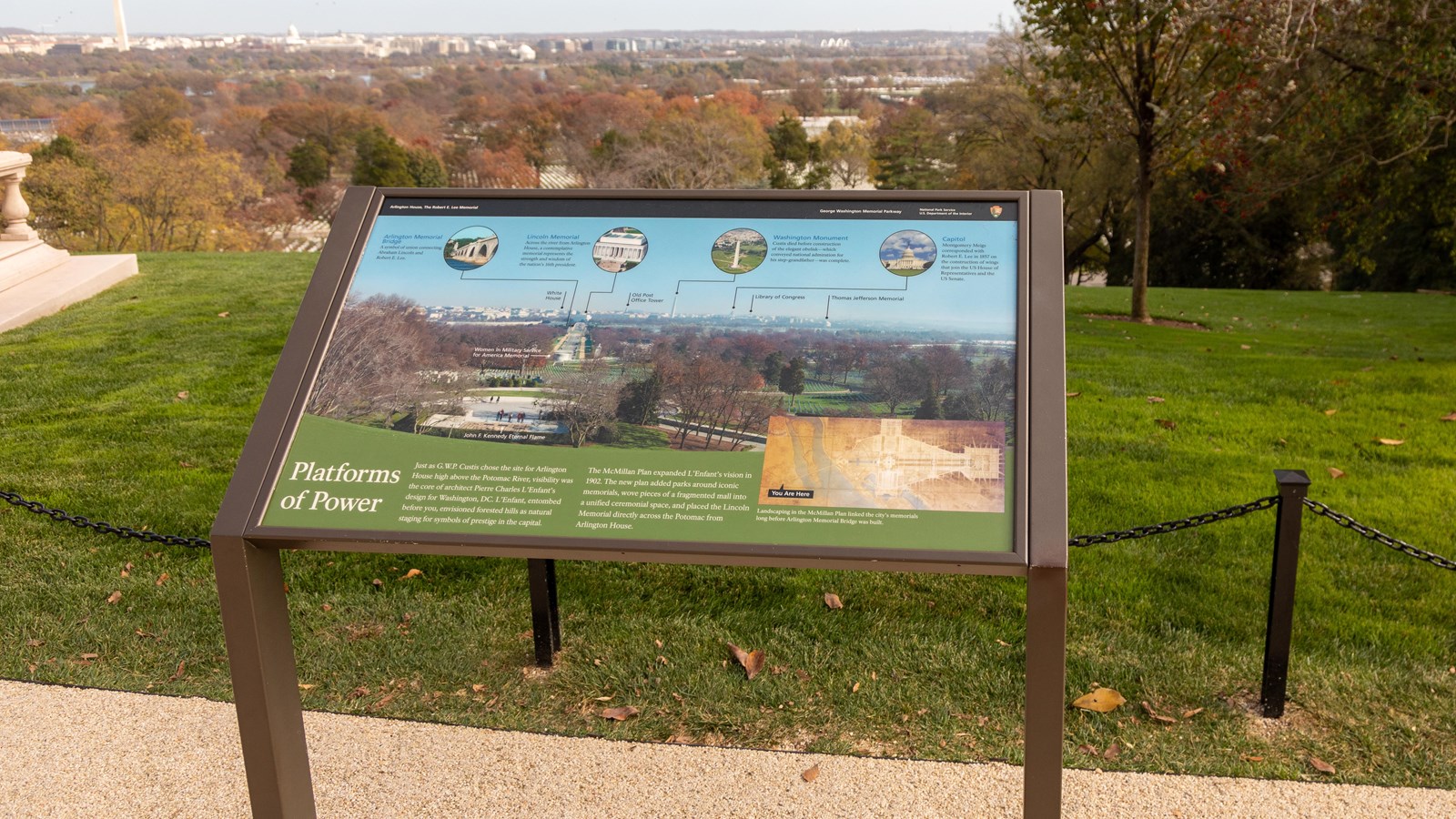Last updated: May 3, 2024
Place
Information Panel: Platforms of Power

NPS / Claire Hassler
Quick Facts
Amenities
1 listed
Historical/Interpretive Information/Exhibits
Just as G. W. P. Custis chose the site for Arlington House high above the Potomac River, visibility was the core of architect Pierre Charles L'Enfant's design for Washington, DC. L'Enfant, entombed before you, envisioned forested hills as natural staging for symbols of prestige in the capital.
The McMillan Plan expanded L'Enfant's vision in 1902. The new plan added parks around iconic memorials, wove pieces of a fragmented mall into a unified ceremonial space, and placed the Lincoln Memorial directlya cross the Potomac from Arlington House.
Landscaping in the McMillan Plan linked the city's memorials long before Arlington Memorial Bridge was built.
Arlington Memorial Bridge
A symbol of union connecting Abraham Lincoln and Robert E. Lee
Lincoln Memorial
Across the river from Arlington House, a contemplative memorial represents the strength and wisdom of the nation's 16th president.
Washington Monument
Custis died before construction on the elegant obelisk - which conveyed national admiration for his step-grandfather - was complete.
Capitol
Montgomery Meigs corresponded with Robert E. Lee in 1857 on the construction of wings that join the US House of Representatives and the US Senate.
The McMillan Plan expanded L'Enfant's vision in 1902. The new plan added parks around iconic memorials, wove pieces of a fragmented mall into a unified ceremonial space, and placed the Lincoln Memorial directlya cross the Potomac from Arlington House.
Landscaping in the McMillan Plan linked the city's memorials long before Arlington Memorial Bridge was built.
Arlington Memorial Bridge
A symbol of union connecting Abraham Lincoln and Robert E. Lee
Lincoln Memorial
Across the river from Arlington House, a contemplative memorial represents the strength and wisdom of the nation's 16th president.
Washington Monument
Custis died before construction on the elegant obelisk - which conveyed national admiration for his step-grandfather - was complete.
Capitol
Montgomery Meigs corresponded with Robert E. Lee in 1857 on the construction of wings that join the US House of Representatives and the US Senate.
